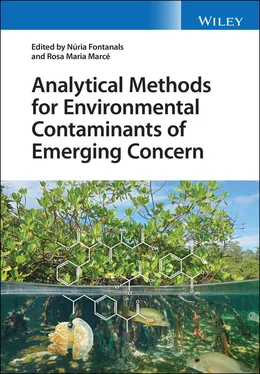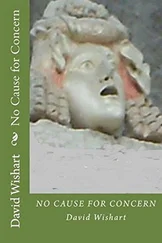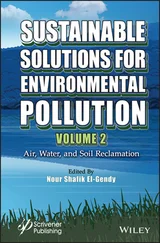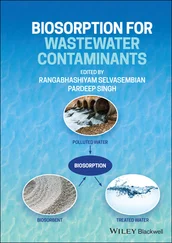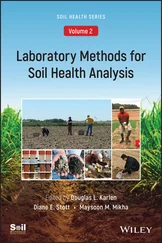Analytical Methods for Environmental Contaminants of Emerging Concern
Здесь есть возможность читать онлайн «Analytical Methods for Environmental Contaminants of Emerging Concern» — ознакомительный отрывок электронной книги совершенно бесплатно, а после прочтения отрывка купить полную версию. В некоторых случаях можно слушать аудио, скачать через торрент в формате fb2 и присутствует краткое содержание. Жанр: unrecognised, на английском языке. Описание произведения, (предисловие) а так же отзывы посетителей доступны на портале библиотеки ЛибКат.
- Название:Analytical Methods for Environmental Contaminants of Emerging Concern
- Автор:
- Жанр:
- Год:неизвестен
- ISBN:нет данных
- Рейтинг книги:5 / 5. Голосов: 1
-
Избранное:Добавить в избранное
- Отзывы:
-
Ваша оценка:
- 100
- 1
- 2
- 3
- 4
- 5
Analytical Methods for Environmental Contaminants of Emerging Concern: краткое содержание, описание и аннотация
Предлагаем к чтению аннотацию, описание, краткое содержание или предисловие (зависит от того, что написал сам автор книги «Analytical Methods for Environmental Contaminants of Emerging Concern»). Если вы не нашли необходимую информацию о книге — напишите в комментариях, мы постараемся отыскать её.
Provides the analytical methodology required to detect different families of organic compounds of emerging concern (CECs) from environmental samples Analytical Methods for Environmental Contaminants of Emerging Concern
Analytical Methods for Environmental Contaminants of Emerging Concern
Analytical Methods for Environmental Contaminants of Emerging Concern — читать онлайн ознакомительный отрывок
Ниже представлен текст книги, разбитый по страницам. Система сохранения места последней прочитанной страницы, позволяет с удобством читать онлайн бесплатно книгу «Analytical Methods for Environmental Contaminants of Emerging Concern», без необходимости каждый раз заново искать на чём Вы остановились. Поставьте закладку, и сможете в любой момент перейти на страницу, на которой закончили чтение.
Интервал:
Закладка:
94 94Martínez Vidal, J.L., Padilla Sánchez, J.A., Plaza-Bolaños, P., Garrido Frenich, A., and Romero-González, R. (2010). Use of pressurized liquid extraction for the simultaneous analysis of 28 polar and 94 non-polar pesticides in agricultural soils by GC/QqQ-MS/MS and UPLC/QqQ-MS/MS. J. AOAC Int. 93: 1715–1731. doi: 10.1093/jaoac/93.6.1715.
95 95Homazava, N., Gachet Aquillon, C., Vermeirssen, E., and Werner, I. (2014). Simultaneous multi-residue pesticide analysis in soil samples with ultra-high-performance liquid chromatography–tandem mass spectrometry using QuEChERS and pressurised liquid extraction methods. Int. J. Environ. Anal. Chem. 94: 1085–1099. doi: 10.1080/03067319.2014.954558.
96 96Pérez-Mayán, L., Ramil, M., Cela, R., and Rodríguez, I. (2020). Multiresidue procedure to assess the occurrence and dissipation of fungicides and insecticides in vineyard soils from Northwest Spain. Chemosphere 261: 127696. doi: 10.1016/j.chemosphere.2020.127696.
97 97Wu, X., Dong, F., Xu, J., Liu, X., Wu, X., and Zheng, Y. (2020). Enantioselective separation and dissipation of pydiflumetofen enantiomers in grape and soil by supercritical fluid chromatography–tandem mass spectrometry. J. Sep. Sci. 43: 2217–2227. doi: 10.1002/jssc.201901332.
98 98Hou, X., Qiao, T., Zhao, Y., and Liu, D. (2019). Dissipation and safety evaluation of afidopyropen and its metabolite residues in supervised cotton field. Ecotoxicol. Environ. Saf. 180: 227–233. doi: 10.1016/j.ecoenv.2019.04.089.
99 99Acosta-Dacal, A., Rial-Berriel, C., Díaz-Díaz, R., Bernal-Suárez, M.M., and Luzardo, O.P. (2021). Optimization and validation of a QuEChERS-based method for the simultaneous environmental monitoring of 218 pesticide residues in clay loam soil. Sci. Total Environ. 753: 142015. doi: 10.1016/j.scitotenv.2020.142015.
100 100Chen, K., Li, S., Hu, M., Xu, J., Wu, X., Dong, F., Zheng, Y., and Liu, X. (2017). Dissipation dynamics of fenamidone and propamocarb hydrochloride in pepper, soil and residue analysis in vegetables by ultra-performance liquid chromatography coupled with tandem mass spectrometry. Int. J. Environ. Anal. Chem. 97: 134–144. doi: 10.1080/03067319.2017.1291807.
101 101Ismail, N.A.H., Wee, S.Y., and Aris, A.Z. (2017). Multi-class of endocrine disrupting compounds in aquaculture ecosystems and health impacts in exposed biota. Chemosphere 188: 375–388. doi: 10.1016/j.chemosphere.2017.08.150.
102 102Egea Gonzalez, F.J., Mena Granero, A., Glass, C.R., Garrido Frenich, A., and Martinez Vidal, J.L. (2004). Screening method for pesticides in air by gas chromatography/tandem mass spectrometry. Rapid Commun. Mass Spectrom. 18: 537–543. doi: 10.1002/rcm.1359.
103 103Van Ael, E., Covaci, A., Blust, R., and Bervoets, L. (2012). Persistent organic pollutants in the Scheldt estuary: environmental distribution and bioaccumulation. Environ. Int. 48: 17–27. doi: 10.1016/j.envint.2012.06.017.
104 104Miyawaki, T., Tobiishi, K., Takenaka, S., and Kadokami, K. (2018). A rapid method, combining microwave-assisted extraction and gas chromatography-mass spectrometry with a database, for determining organochlorine pesticides and polycyclic aromatic hydrocarbons in soils and sediments. Soil Sediment Contam. 27: 31–45. doi: 10.1080/15320383.2017.1360245.
105 105Zhao, X., Cui, T., Guo, R., Liu, Y., Wang, X., An, Y., Qiao, X., and Zheng, B. (2019). A clean-up method for determination of multi-classes of persistent organic pollutants in sediment and biota samples with an aliquot sample. Anal. Chim. Acta 1047: 71–80. doi: 10.1016/j.aca.2018.10.011.
106 106Mesquita, T.C.R., Santos, R.R., Cacique, A.P., De Sá, L.J., Silvério, F.O., and Pinho, G.P. (2018). Easy and fast extraction methods to determine organochlorine pesticides in sewage sludge, soil, and water samples based at low temperature. J. Environ. Sci. Heal. – Part B Pestic. Food Contam. Agric. Wastes. 53: 199–206. doi: 10.1080/03601234.2017.1405626.
107 107Belmonte Vega, A., Garrido Frenich, A., and Martínez Vidal, J.L. (2005). Monitoring of pesticides in agricultural water and soil samples from Andalusia by liquid chromatography coupled to mass spectrometry. Anal. Chim. Acta 538: 117–127. doi: 10.1016/j.aca.2005.02.003.
108 108Knoll, S., Rösch, T., and Huhn, C. (2020). Trends in sample preparation and separation methods for the analysis of very polar and ionic compounds in environmental water and biota samples. Anal. Bioanal. Chem. 412: 6149–6165. doi: 10.1007/s00216-020-02811-5.
109 109 Deng, H., Ji, Y., Tang, S., Yang, F., Tang, G., Shi, H., and Kee Lee, H. (2020). Application of chiral and achiral supercritical fluid chromatography in pesticide analysis: a review. J. Chromatogr. A 1634: 461684. doi: 10.1016/j.chroma.2020.461684.
110 110Bieber, S., Greco, G., Grosse, S., and Letzel, T. (2017). RPLC-HILIC and SFC with mass spectrometry: polarity-extended organic molecule screening in environmental (water) samples. Anal. Chem. 89: 7907–7914. doi: 10.1021/acs.analchem.7b00859.
111 111Salvatierra-Stamp, V.D.C., Ceballos-Magaña, S.G., Gonzalez, J., Ibarra-Galván, V., and Muñiz-Valencia, R. (2015). Analytical method development for the determination of emerging contaminants in water using supercritical-fluid chromatography coupled with diode-array detection. Anal. Bioanal. Chem. 407: 4219–4226. doi: 10.1007/s00216-015-8581-x.
112 112Geerdink, R.B., Hassing, M., Ayarza, N., Bruggink, C., Wielheesen, M., Claassen, J., and Epema, O.J. (2020). Analysis of glyphosate, AMPA, glufosinate and MPPA with ion chromatography tandem mass spectrometry using a membrane suppressor in the ammonium form application to surface water of low to moderate salinity. Anal. Chim. Acta 1133: 66–76. doi: 10.1016/j.aca.2020.05.058.
113 113Gissawong, N., Mukdasai, S., Boonchiangma, S., Sansuk, S., and Srijaranai, S. (2020). A rapid and simple method for the removal of dyes and organophosphorus pesticides from water and soil samples using deep eutectic solvent embedded sponge. Chemosphere 260: 127590. doi: 10.1016/j.chemosphere.2020.127590.
114 114Asensio-Ramos, M., Hernández-Borges, J., Ravelo-Pérez, L.M., Alfonso, M.M., Palenzuela, J.A., and Rodríguez-Delgado, M.A. (2012). Dispersive liquid-liquid microextraction of pesticides and metabolites from soils using 1,3-dipentylimidazolium hexafluorophosphate ionic liquid as an alternative extraction solvent. Electrophoresis 33: 1449–1457. doi: 10.1002/elps.201100522.
115 115Ivdra, N., Herrero-Martín, S., and Fischer, A. (2014). Validation of user- and environmentally friendly extraction and clean-up methods for compound-specific stable carbon isotope analysis of organochlorine pesticides and their metabolites in soils. J. Chromatogr. A 1355: 36–45. doi: 10.1016/j.chroma.2014.06.014.
116 116Domínguez, I., Arrebola, F.J., Martínez Vidal, J.L., and Garrido Frenich, A. (2020). Assessment of wastewater pollution by gas chromatography and high resolution Orbitrap mass spectrometry. J. Chromatogr. A 1619: 460964. doi: 10.1016/j.chroma.2020.460964.
117 117Meng, D., Fan, D., Gu, W., Wang, Z., Chen, Y., Bu, H., and Liu, J. (2020). Development of an integral strategy for non-target and target analysis of site-specific potential contaminants in surface water: a case study of Dianshan Lake, China. Chemosphere 243: 125367. doi: 10.1016/j.chemosphere.2019.125367.
2 Pharmaceuticals
Monika Paszkiewicz, Hanna Lis, Magda Caban, Anna Białk-Bielińska, and Piotr Stepnowski
Department of Environmental Analysis, Faculty of Chemistry, University of Gdansk, Gdansk, Poland
2.1 Overview of Pharmaceuticals
2.1.1 Properties
It has already been more than 20 years since the problem of pharmaceutical residues in the environment gained huge scientific attention all over the world [1, 2]. In general, pharmaceuticals are chemicals that have been designed to be biologically active at very low doses for therapeutic, prophylactic and preventative purposes. Therefore, they may be classified based on their mode of action or medical purposes. From the chemical point of view, this group of substances is usually referred to as polar and ionizable compounds. However, it should be noted that this is a class of chemicals with a wide range of physico-chemical properties (Figure 2.1) [1]. Based on the selected properties presented in Figure 2.1, pharmaceuticals are compounds with either a very simple chemical structure or a very complicated one, that can be furthermore classified as weak acids/bases or amphoteric compounds [1]. Their structure and hence properties such as acidity and hydrophilicity/lipophilicity influence their fate in the environment. To prove this the estimated adsorption coefficients have also been presented in Figure 2.1, highlighting that some of these chemicals might be recognized as very mobile while others present rather strong sorption potential to soil and sediments [3, 4]. This also explains why pharmaceuticals have been detected in many different environmental compartments [1–3, 5–10].
Читать дальшеИнтервал:
Закладка:
Похожие книги на «Analytical Methods for Environmental Contaminants of Emerging Concern»
Представляем Вашему вниманию похожие книги на «Analytical Methods for Environmental Contaminants of Emerging Concern» списком для выбора. Мы отобрали схожую по названию и смыслу литературу в надежде предоставить читателям больше вариантов отыскать новые, интересные, ещё непрочитанные произведения.
Обсуждение, отзывы о книге «Analytical Methods for Environmental Contaminants of Emerging Concern» и просто собственные мнения читателей. Оставьте ваши комментарии, напишите, что Вы думаете о произведении, его смысле или главных героях. Укажите что конкретно понравилось, а что нет, и почему Вы так считаете.
